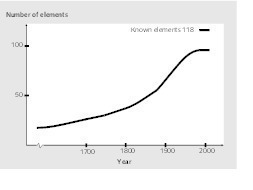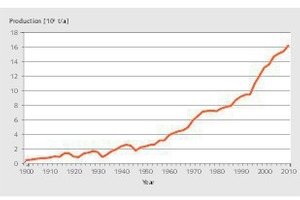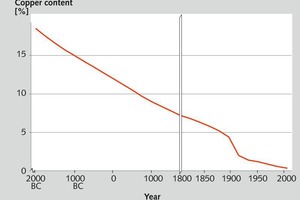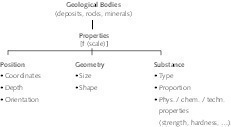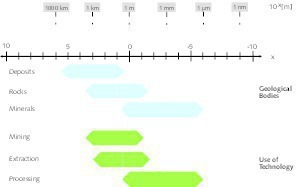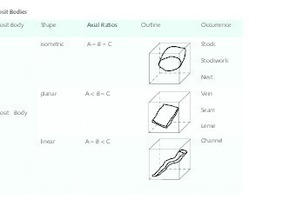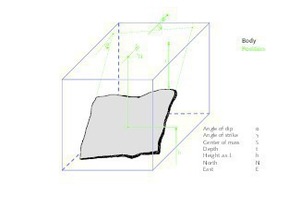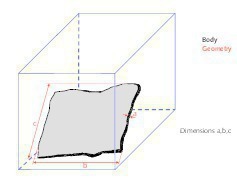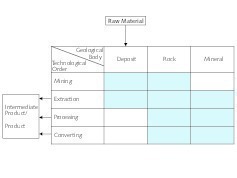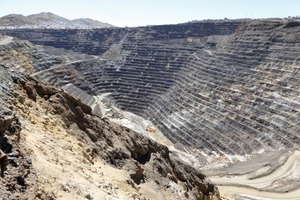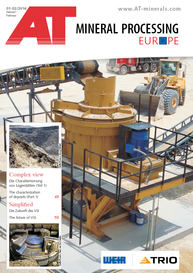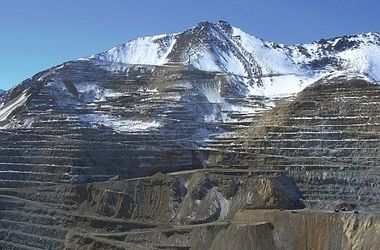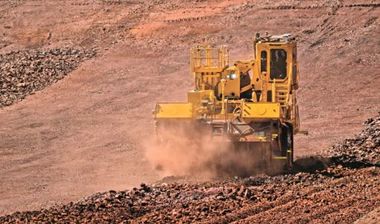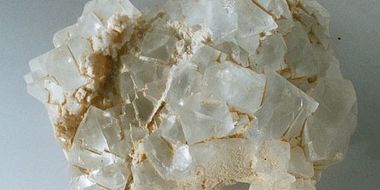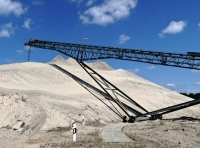The characterization of deposits – Basis of utilization and development of technologies and machinery (Part 1)
Complex viewSummary: There are only few industrial projects that influence social developments and sustainably interfere with nature as much as mining projects do. Therefore, people and, on a global level, also most states require preparatory, accompanying and subsequent measures to minimize the detrimental consequences. Moreover, construction, operation and closing down of mining facilities do not only require high capital expenditures, but due to the uniqueness of each single mining project they also involve difficult-to-assess risks. On global level, deposits with identical geometrical and material properties do not exist. Therefore, the capital employed and the risk of misdirected investments can only be reduced, if development and planning processes happen in a structured and systematic way, based on metrologically recorded and arithmetically formulated characteristics of the respective deposit. Then, derived from these findings, the technologies and machines for mining, extraction and processing adequate for the required product qualities and adapted to the environmental requirements can be developed and selected. However, the prototype character of such plants will persist at any rate.
1 Introduction
The development of human civilization was accompanied by the increasing utilization of chemical elements and compounds and thus by minerals and rocks. At first, only few elements, such as gold and copper, as well as compounds, such as quartz and rock salt, were in the focus of interest. Meanwhile, however, due to the technical development, the majority of the actually 118 known elements with their different compounds are used for various purposes [1, 2] (Fig. 1). Furthermore, the growing world population and the increasing prosperity require continuously higher production volumes, as for example, of copper [3] (Fig. 2). For these reasons, not only the mining production volumes increased, but also the variety of the raw materials to be extracted and the mining products gained.
The elements are to be found in different concentrations in that part of the Earth that is accessible to man, i.e. in the Earth’s crust. In this context, the average share of the elements is called the Clarke value, in literature however the values scatter [2, 4, 5, 6, 7, 8, 9, 10]. Therefore, the values are indicated as rounded, averaged values (Table 1). Iron or aluminum, for example, are widespread, whereas gold or lead are rare. The minerals were locally enriched or depleted by means of geological processes. Once the enrichment is finished, the resulting deposits with the appropriate quality, size and accessibility as well as the suitable extraction and processing technologies can be efficiently exploited. However, unless other aspects, such as supply reliability, industrial self-reliance or political framework conditions play a role, a deposit can only be efficiently exploited, if the enrichment of an element exceeds a certain factor and thus the cut-off grade a certain value [2, 4, 6, 8, 9] (Table 1). However, the cut-off grade may be significantly lower, if in addition to the main products, by-products can be recovered, often molybdenum and/or gold in case of porphyry copper deposits. At first, such deposits or parts of them are mined that guarantee economic success. With the increasing depletion or mining of rich deposits and due to the technical development, the limits of efficiently exploitable deposits will change.
For this reason, poorer deposits become increasingly interesting, i.e. the cut-off grade decreases [1] (Fig. 3). The exploitation and mining of big but poor sulphide porphyry copper deposits as well as the development and introduction of flotation and tumbling mills caused a drop of the cut-off grade of copper, for example, from about 3 to 4 % a hundred years ago to 0.5 % Cu today. With the further development and the introduction of the leaching method and high-pressure grinding, in future even poorer deposits will shift into the focus of interest.
In view of such trends and with the necessity of using deposits the development of which is increasingly difficult, the technologies and machines applied have a decisive influence on the efficient operation of a mining installation. However, they must be adapted to the respective deposit. The basis of a comprehensible selection and development of such technologies and machines is the adequate characterization of the deposit.
2 Characterization of deposits
Deposits can be described and systematized according to different aspects. Depending on the goal of examination and utilization, various characterization aspects are taken as a basis, such as the genesis (e.g. metasomatic, sedimentary exhalative) or the commodity (e.g. gold, copper, hard coal). However, the economic yield of a deposit also depends on a chain of linked processes, as on the technologies selected for mining, extraction, processing and converting as well as on the machines and devices required for it. They take advantage of physical, chemical and biological effects for the generation of valuable material. Therefore, the selection or the development of the adequate sequence of technologies and machines must be based on objective criteria, which are measurable, thus clearly determinable and mathematically describable to leave as little scope as possible for interpretation, i.e. local, geometrical and material characteristics (Fig. 4).
Aim of such a characterization is the indication of local characteristics, so-called location parameters, which specify the geographic location, depth and orientation of a deposit; the indication of geometrical characteristics, which specify size and form, as well as of material characteristics, which specify chemical geological/mineralogical, physical and technological parameters of the deposit parts. This requires areas to be defined which, due to boundary surfaces, differ from their environment. Within the boundary surfaces, the areas must be as homogeneous as possible, i.e. they must show the same material characteristics. They are called geological bodies.
2.1 Scale
The homogeneity of a body however depends on the contemplation scale (Fig. 5). Here, the elements of a deposit are the individual rock bodies, the dimensions of which typically range from some centimeters to up to several hundred meters.
The rocks, in turn, consist of minerals or in the case of coal even of macerals, with dimensions of usually less than one centimeter, but in exceptional cases of even more than one meter.
Within their boundaries, however deposits are often not homogeneous, i.e. the material characteristics vary locally. In such cases, a deposit consists of several different geological bodies, such as the polymetallic deposit of Tsumeb in Namibia with oxidic and sulphide ores [12, 13].
The characteristics of the different bodies are now the basis for the selection and layout of technologies and machines. In mining, typical technological approaches range from some decimeters to more than one kilometer, and in extraction, from a few centimeters to some hundred meters while in processing, they even cover a range from micrometers to meters. In many cases it is to be noted that the size ranges of geological bodies may overlap the application cases of technologies: for example, the structural dimensions of a deposit may be smaller than the sizes of the output products from the extraction and the sizes of the input products for the processing (e.g. in case of small veins). This also influences the selection and design of technology and machinery. So apart from the characteristics of the valuable mineral rocks, even those of the country rocks need to be taken into account in the design of the crushers.
2.2 Geological bodies
Thus, the examination of a geological body depends on the scale. A deposit consists of different rocks and these, in turn, of different minerals. Within the scope of this paper, considerations regarding the characterization of a deposit shall be set forth while regarding the characteristics of rocks and minerals and their technical relevance, reference is made to the respective literature [14, 15, 16]. In this field, advances were made in the last years, although there is still considerable research need.
The boundary surface of an enrichment of useful valuable materials to the surrounding gangue forms a body, the position and orientation as well as the morphology and size of which along with the material parameters form the basis for the characterization of a deposit. In many deposits however, this boundary surface is not clearly developed, but the content of valuable materials forms a gradient to the surrounding rocks.
In such cases, the respectively applicable cut-off grade of the solid valuable material can be alternatively utilized, although in practice, the determination is often difficult, in particular with regard to future cut-off grades.
In principle, deposit bodies can be subdivided into 3 morphological main groups, preferably into 3-, 2- and 1-dimensional bodies [17, 18] (Fig. 6). The classification occurs, for example, using the ratios of the main dimensions or the axes A, B and C, which are orthogonal to each other.
2.2.1 Three-dimensional deposit bodies
The isometric, mainly three-dimensional deposit bodies show measurements in the same order of magnitude in all three dimensions. The isometric bodies include stocks, stockworks or nests.
Compared to the surrounding rocks, stocks usually shows clear boundary surfaces. Examples are many salt stocks in the North German Plain.
Stockworks however consist of rocks which are interspersed with a dense network of fine veins and impregnated with finely dispersed minerals. In contrast to the stocks, stockworks do not show a sharp transition between the deposit bodies and the surrounding rock, but as a rule, the transition is the gradient of the useful mineral contents. Therefore, extraction occurs according to economic aspects with regard to the minimum content of valuable fractions. Typical examples are the greisens in Geyer/Ore Mountains as well as some disseminated porphyry copper ore deposits in Chile or in the USA.
The third deposit type of the isometric bodies are nests, which represent relatively small and local accumulations of valuable fractions. Examples are tin ore deposits in Ehrenfriedersdorf/Ore Mountains [19].
2.2.2 Two-dimensional deposit bodies
The plate-shaped, mainly two-dimensional deposit bodies show considerably larger sizes in two dimensions than in the third direction. This body type includes seams, veins and lenses.
Seams are often concordantly embedded in the rock body or lie discordantly on it. They occur as single seams (e.g. the Mansfeld copper slate deposit) or as multi-layer seams (e.g. hard coal deposits in Zwickau) in which interim layers of different compositions (muck) are intercalated.
Lenses are lenticularly developed, provided their two-dimensional expansion is smaller than that of seams and their thickness tapers off towards the peripheral zones. Exemplary representatives of this type of deposit are the ore deposits in Meggen/Sauerland and that of Rammelsberg in Goslar/Harz Mountains [20].
Mineral formations that are deposited in cracks and fissures of the rock body are called veins. Therefore, they mostly occur discordantly. Besides single veins, vein zones often occur consisting of several parallel running veins or of branches diverting from the main vein to the surrounding rock. The ore deposits of the Upper Harz or of the Freiberg territory are typical examples of vein deposits.
2.2.3 One-dimensional deposit bodies
In case of funnel-like, mainly one-dimensional deposits, one dimension prevails over the others. As a rule, they discordantly break through the surrounding rock body. Many diamond deposits, such as the Kimberley deposit in South Africa, belong to this type.
In nature, these ideal-typical deposit bodies occur in a more or less modified form. Due to geological processes, the characteristics of the ideal form occur or change locally or completely to varying degrees. This includes mechanical processes (e.g. lifting, lowering, bending, faulting, fracturing), thermal processes (e.g. heating, melting) or physicochemical processes (e.g. eluviation, solution, redox-reactions).
2.3 Characteristics
The aim of compiling such characteristics is an as clear as possible description, mathematically formulated and sufficiently comprehensive, of a deposit on the basis of measurements, in order to develop a sound basis for comprehensible decisions on technologies, processes and machines to be used. A two-dimensional deposit serves as an example, since its characterization requires the most features.
2.3.1 Position
To determine the position of a geological body, at first, points, axes, and/or levels characteristic for the deposit need to be found. Reference point may be the body’s center of gravity S.
Often, however, the dimensions of a deposit are unknown at the beginning of the mining process so that a characteristic point, for example the highest point or the deposit’s starting point for the mining process, can be useful. The position of such points can be indicated by longitude and latitude (north °N, south °S of the equator; west °W, east °E of Greenwich). Also, the altitude h can simply be determined by the meters above standard zero; for technological reasons however, the additional indication of the depth t is reasonable.
Non-isometric bodies require additional information on the orientation of the deposit. While for mainly 1-dimensional bodies the characterization by means of the angle of dip a is sufficient, for mainly 2-dimensioal deposits, the angle of dip and angle of strike γ are required (Fig. 7). In case of extensive deposits with geometrically complex structures, one set of location parameters is usually not enough. Depending on the complexity, deviating and additional parameters need to be determined (see part 2, example).
2.3.2 Geometry
The boundary surface towards the surrounding gangue determines the size and the form of the deposit body. While the size of the deposit can be indicated relatively easily using its main dimensions a, b and c, regarding its shape, a distinction is made between that of body and surface (Fig. 8).
The shape of the body results from the approximation using geometrical “basic bodies”, as e.g. wrapping cuboids or ellipsoids or those of equivalent volumes. The ratios of the main dimensions or axis lengths allow a numerical characterization of the shapes.
The surface shape describes the “roughness” of the deposit surface, which is particularly important for the extraction process, since in case of smooth surfaces, usually the proper breaking off of the valuable fraction is possible without major contaminations of wall rocks.
2.3.3 Material
Deposits deliver most different raw materials, such as energy, metal or industrial mineral raw materials, but also gemstones and precious stones or water and terrestrial heat. Accordingly, even the analysis and evaluation methods vary in order to obtain the required information for mining, extraction, processing and converting, but also for the valuable material to be produced. Therefore, a deposit needs to be examined and characterized geologically, mineralogically, chemically, physically, but also technologically and sometimes even biologically. Due to legal or official regulations, industry specifics are not to be neglected or should even obligatorily be taken into account. Therefore, general global standards are not available and can be developed to a limited extent only. The only possible way out is a sound supplementary mathematical analysis and assessment that enables the respective technological and industry-specific, interpretive conclusion on the basis of these “neutral” data.
3 Analysis
In the analysis, the dimensioning and the development of plants, technologies and machinery used for mining, extraction and processing, the characteristics of the deposit and of the raw materials it includes must be taken into account just like the qualities to be achieved, the prices of the products to be produced and the boundary conditions regarding society and environment that need to be met. The individual stages of the technological sequence use the characteristics of the geological body in different ways (Fig. 9). Thus, the selection of the suitable mine development, preparatory work and extraction, for example in the case of underground mining, is not only determined by the characteristics of the deposit, but also by that of the rocks and country rocks. The extraction, in turn, is not only aligned to the characteristics of the deposit and the mining technology applied, but must also take into consideration the rock and mineral properties in order to enable the dimensioning of the machine and the selection of the suitable wear materials. Apart from the properties of the rock to be mined and the braking wall rock and its minerals, it is the processing technology and machinery that determine the quality of the products to be produced.
Thus, for the efficient exploitation of a deposit, the characteristics of all geological bodies, i.e. of the deposit, its rocks and country rocks and their minerals, must be taken into consideration.

